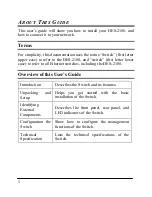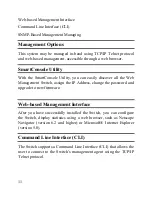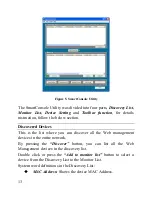
2
I
N T R O D U C T I O N
This section describes the features of the DES-2108, as well as giving
some background information about Fast Ethernet and Switching
technology.
Fast Ethernet Technology
The growing importance of LANs and the increasing complexity of
desktop computing applications are fueling the need for high
performance networks. A number of high-speed LAN technologies
are proposed to provide greater bandwidth and improve client/server
response times. Among them, Fast Ethernet, or 100BASE-T, provides
a non-disruptive, smooth evolution from 10BASE-T technology.
100Mbps Fast Ethernet is a standard specified by the IEEE 802.3
LAN committee. It is an extension of the 10Mbps Ethernet standard
with the ability to transmit and receive data at 100Mbps, while
maintaining the Carrier Sense Multiple Access with Collision
Detection (CSMA/CD) Ethernet protocol.
Switching Technology
Another key development pushing the limits of Ethernet technology is
in the field of switching technology. A switch bridges Ethernet
packets at the MAC address level of the Ethernet protocol transmitting
among connected Ethernet or Fast Ethernet LAN segments. Switching
is a cost-effective way of increasing the total network capacity
available to users on a local area network. A switch increases capacity
and decreases network loading by making it possible for a local area
network to be divided into different segments, which are not
competing with each other for network transmission capacity, and
therefore decreasing the load on each segment. The Switch acts as a
high-speed selective bridge between the individual segments. Traffic









































